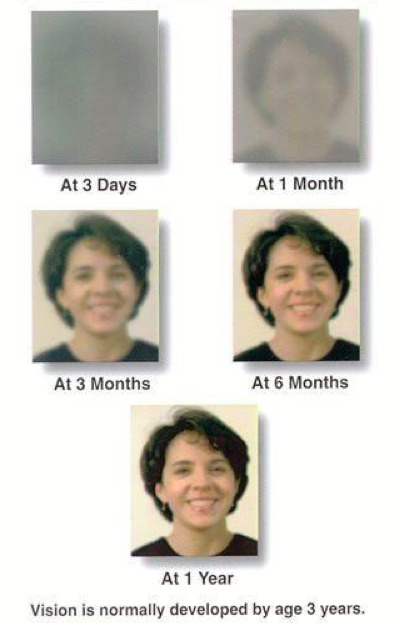Peekaboo!
But do they see you?
A baby’s vision is tested in a few different ways, with one of the main processes checking for preferential looking: how an infant reacts to two different stimuli. Researchers use this test (as well as their knowledge of eye anatomy and physiology) to understand the spontaneous looking preferences of the infant.
How An Infant Views The World
(From a one-metre distance)

To find out if babies have an inherent recognition for faces an experiment was conducted that used three different stimuli – one with ‘face-like’ features, one with the same features but jumbled, and one without any features. Moving each in front of the baby’s face showed that they looked at the face more than the other two.
When testing for detailed vision a black and white stripes type of visual stimuli is used. The infant is shown both a gray test and then one with ‘grated’ stripes with the latter being more interesting to infants (who spend more time looking at it). From here the ‘gratings’ can be progressively changed in size and made finer, until the infant can no longer distinguish between the lines and the other gray stimuli.
The same type of experiment was performed on very young babies to see if they could recognise the difference between their mother and someone else.
With the preferential viewing process the results showed the infant looking at the mother 63% of the time – far more than could be attribute to chance. Given that a two or three day old could not distinguish facial features the researchers then performed the same experiment with each person wearing a head scarf. There was subsequently no difference in preference between the two stimuli, and researchers concluded it was the hairline contrast that babies were using to ascertain which was their mother.
There are many more interesting and complex methods used to test vision at an early age and science is always developing new ways to both test and enhance sight from an early age.